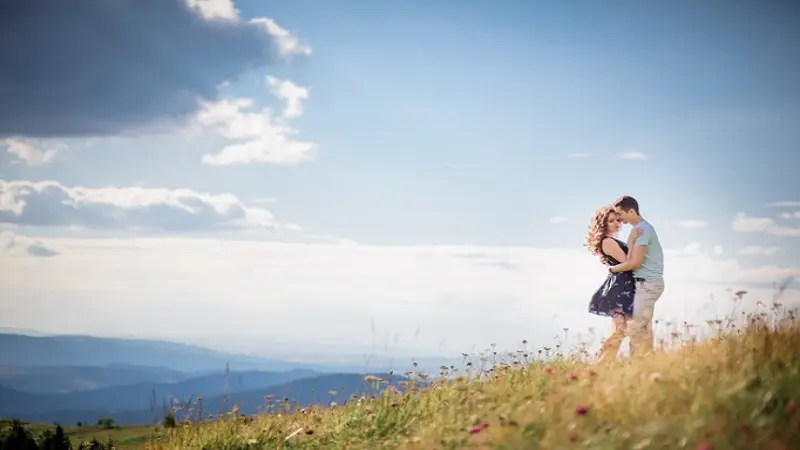In a world increasingly dominated by technology and urbanization, the timeless allure of “Mother Nature” and the human drive for exploration and discovery remain potent forces. Combining these concepts, “Wonderlustsinofsky” emerges as a unique blend of appreciation for nature’s splendor and an insatiable curiosity mother nature wonderlustsinofsky about the world. This article explores the intricate relationship between Mother Nature and human wanderlust while delving into how these themes are interwoven in the context of modern exploration and discovery.
Introduction
“Mother Nature” epitomizes the essence of the natural world—its beauty, power, and complexity. This term is a tribute to the forces that shape our environment, from majestic landscapes to intricate ecosystems. On the other hand, “Wonderlustsinofsky,” a phrase that seems to merge “wonderlust” with a possible surname or mother nature wonderlustsinofsky thematic reference, symbolizes a deep and persistent curiosity about the world and a desire to explore it.
Understanding how these concepts interplay provides insight into human fascination with nature and the broader quest for knowledge. This journey through the themes of Mother Nature and Wonderlust will encompass ecological appreciation, personal discovery, and the impacts of these elements on our lives and societies.
1. Mother Nature: The Enigma of Natural Beauty
Mother Nature is a personification of the natural world, embodying the intricate and often awe-inspiring processes that govern life on Earth. This concept encompasses a wide array of phenomena, from serene landscapes to the raw forces of weather and geology.
1.1 The Majesty of Landscapes
The beauty of Mother Nature is perhaps most evident in the diverse landscapes that adorn our planet. From the sweeping vistas of the Grand Canyon to the lush greenery of the Amazon Rainforest, natural landscapes offer a profound sense of wonder and tranquility.
Mountain Ranges
Mountain ranges like the Himalayas and the Rockies are not just geographical features but also sources of inspiration and exploration. These towering peaks challenge climbers and hikers, providing a unique vantage point to view the world below.
Oceans and Seas
Oceans cover more than 70% of Earth’s surface and are home to a myriad of ecosystems. The sheer scale and depth of the oceans, coupled with their biodiversity, make them a focal point of both scientific study and personal awe.
Forests and Jungles
Forests, such as the Congo Basin mother nature wonderlustsinofsky and the Boreal Forest, are crucial for the planet’s ecological balance. They act as carbon sinks, regulate weather patterns, and host an extraordinary variety of life forms.
1.2 Natural Phenomena
Beyond landscapes, Mother Nature’s influence extends to various natural phenomena that captivate the human imagination.
Auroras
The Northern and Southern Lights are stunning visual displays caused by charged particles interacting with Earth’s magnetic field. These ethereal lights are a reminder of the complex interplay between our planet and space.
Volcanic Eruptions
Volcanoes represent the dynamic and often volatile nature of Earth. Eruptions can reshape landscapes, create new landforms, and have significant impacts on climate and ecosystems.
Weather Patterns
Weather patterns, from gentle rain showers to fierce thunderstorms, demonstrate the power and unpredictability of natural forces. They also play a crucial role in shaping environments and influencing human activities.
2. Wonderlust: The Human Drive for Exploration
Wanderlust—a blend of “wonder” and “lust”—captures the essence of human curiosity and the desire to explore the unknown. This innate drive fuels scientific discoveries, adventurous pursuits, and a deeper understanding of our place in the world.
2.1 Historical Exploration
Human history is marked by a relentless quest for exploration and discovery. Ancient explorers ventured across uncharted territories, driven by the desire to understand and map the world.
Age of Discovery
The Age of Discovery, spanning the 15th to the 17th centuries, saw European explorers such as Christopher Columbus and Ferdinand Magellan embark on journeys that expanded the known world. These explorations significantly impacted global trade, culture, and geopolitics.
Scientific Exploration
In the 19th and 20th centuries, scientific exploration became prominent with figures like Charles Darwin and his voyage on the HMS Beagle. Such explorations not only mapped new territories but also deepened our understanding of biology, geology, and ecology.
2.2 Modern Exploration
Today, exploration continues in new and innovative ways, from space travel to deep-sea exploration.
Space Exploration
Space agencies like NASA and ESA push the boundaries of human mother nature wonderlustsinofsky knowledge, exploring the solar system and beyond. Missions to Mars, the Moon, and other celestial bodies aim to uncover the mysteries of the universe and our place within it.
Deep-Sea Exploration
The depths of the oceans remain one of the least explored frontiers. Advances in submersible technology have allowed scientists to study deep-sea ecosystems and uncover new species, revealing the vastness and complexity of underwater life.
2.3 The Role of Technology in Exploration
Modern technology has revolutionized exploration, making it more accessible and comprehensive. Innovations such as satellites, drones, and high-resolution imaging allow for detailed study and documentation of remote or difficult-to-reach areas.
Digital Mapping
Digital mapping tools and geographic information systems (GIS) provide detailed and accurate representations of Earth’s surface. These technologies support a wide range of applications, from environmental monitoring to urban planning.
Virtual Reality
Virtual reality (VR) offers immersive experiences in remote or inaccessible locations. VR simulations enable users mother nature wonderlustsinofsky to explore natural wonders and historical sites from the comfort of their homes, bridging the gap between curiosity and physical exploration.
3. The Intersection of Mother Nature and Wanderlust
The interplay between Mother Nature and Wonderlust represents a profound synergy between natural beauty and human curiosity. This intersection drives both personal experiences and scientific inquiry, fostering a deeper appreciation for the natural world and a greater understanding of our place within it.
3.1 Personal Experiences and Inspiration
Experiencing nature’s grandeur often inspires a sense of wonder and curiosity. Individuals who venture into natural settings, whether hiking in the mountains or diving in coral reefs, often find their perspectives on life and the world transformed.
Adventure Tourism
Adventure tourism caters to those seeking unique experiences in natural environments. Activities such as trekking in the Andes or exploring the Galápagos Islands offer opportunities mother nature wonderlustsinofsky to engage directly with nature and satisfy one’s wanderlust.
Nature Photography
Nature photography captures the beauty and complexity of the natural world. Photographers use their craft to highlight the splendor of landscapes, wildlife, and natural phenomena, inspiring others to appreciate and protect the environment.
3.2 Scientific Inquiry and Conservation
Scientific inquiry often arises from a desire to understand and explore the natural world. Researchers and conservationists are driven by wanderlust to study ecosystems, species, and environmental processes, aiming to safeguard the planet for future generations.
Biodiversity Research
Biodiversity research seeks to document and understand the myriad forms of life on Earth. This research is crucial for conservation efforts, as it helps identify endangered species and assess the health of ecosystems.
Climate Change Studies
Understanding the impacts of climate change on natural systems is a major focus of scientific research. Studying how climate shifts affect weather patterns, sea levels, and ecosystems informs strategies for mitigating and adapting to environmental changes.
3.3 Cultural and Philosophical Reflections
The themes of Mother Nature and Wonderlust also resonate on cultural and philosophical levels. Different cultures and philosophies offer diverse perspectives on the relationship between humans and nature.
Indigenous Knowledge
Indigenous cultures often have deep, spiritual connections to the natural world. Their knowledge systems reflect a profound understanding of ecological mother nature wonderlustsinofsky balance and sustainable living, offering valuable insights into harmonizing with nature.
Philosophical Perspectives
Philosophers have long pondered the human experience of nature and exploration. From Romanticism’s emphasis on nature’s sublime beauty to contemporary ecological ethics, these perspectives shape how we value and engage with the natural world.
Conclusion
The concepts of Mother Nature and Wonderlust encapsulate a rich tapestry of natural beauty and human curiosity. By exploring these themes, we gain a deeper appreciation mother nature wonderlustsinofsky for the intricate and often awe-inspiring processes that shape our world, as well as the relentless drive for discovery that propels us forward.
From the majestic landscapes crafted by Mother Nature to the modern advancements in exploration fueled by wanderlust, these elements are interconnected in a dynamic relationship. They inspire us to seek out new experiences, understand our environment, and ultimately, find our place within the grand scheme of the natural world.
As we continue to explore mother nature wonderlustsinofsky engages with both the wonders of nature and the boundless human curiosity that drives us, we pave the way for a greater understanding of ourselves and the planet we call home.


